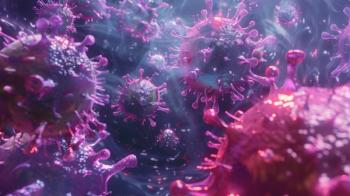
Expert Panel Updates the Race for a COVID-19 Vaccine
There is no perfect moment to timestamp the accelerated, massive movement toward finding and distributing the first vaccine candidates for the coronavirus 2019 pandemic.
Missed the webinar?
There is no perfect moment to timestamp the accelerated, massive movement toward finding and distributing the first vaccine candidates for the coronavirus 2019 (COVID-19) pandemic.
There are dozens of legitimate agents making earnest progress toward clinical consideration at an unprecedented pace—in this month alone, a pair of vaccine candidates of entirely different makeup and effect reached phase 3 assessment, while another couple of candidates were agreed upon for mass distribution with countries in billion-dollar deals.
These latter vaccines have yet to even compile a full body of efficacy, safety, and tolerability data—and yet, they are the hope of national leaders.
No, this unforeseen and nonlinear process of research, application, reporting, manufacturing, and distributing of vaccines has no point on its timeline reserved for reflection and forecasting. Rather, ‘sooner than later’ would be the most ideal time to discuss the COVID-19 vaccine race.
Last night, MJH Life Sciences hosted the COVID-19: Race for a Vaccine live webinar, featuring a distinguished trio of presenters:
Walter A. Orenstein, MD
- Professor and Associate Director, Emory Vaccine Center
- Professor, Department of Medicine, Division of Infectious Diseases, Emory University School of Medicine
- Director, Emory-UGA Center of Excellence for Influenza Research and Surveillance (CEIRS)
Angela Rasmussen, PhD
- Associate Research Scientist, Center for Infection and Immunity, Mailman School of Public Health, Columbia University
Gregory A. Poland, MD, MACP, FIDSA, FRCP
- Mary Lowell Leary Emeritus Professor of Medicine, Infectious Diseases, Molecular Pharmacology, and Experimental Therapeutics
- Distinguished Investigator, Mayo Clinic
- Director, Mayo Vaccine Research Group
- Editor-in-Chief, VACCINE
The virtual panel held lecture on the brief history, the current understanding, and the future practice of the COVID-19 vaccine process. As they did for their audience, here is a chronological breakdown of the discussion.
The Pipeline
Rasmussen began the webinar with a quick update on the current tally of COVID-19 vaccine candidates: as per The New York Times this week, there are more than 140 preclinical vaccines, 18 in phase 1; 12 in phase 2; 6 in phase 3; and just 1 approved for limited use—a vaccine developed for use in the Chinese military.
Among the most basic principles of vaccine development, Rasmussen said, are the exposure to antigen (weakened virus being injected into the patient), an immune response to the antigen, and immunological memory.
Historically, vaccine platforms largely came in cross-protection, toxoid, inactivated, or live attenuated forms. All 4 of these platforms and their introduction to a greater array of vaccine indications have made for “game changers in public health,” Rasmussen said.
Despite traditional vaccines being most famous for their massive reduction of smallpox and polio deaths in the few years following vaccination, they do bear shortcomings: they are difficult to mass-manufacture, slow to develop, and can result in adverse effects.
Eventually, scientists developed improved vaccine platforms:
- Subunit vaccines, which uses recombinant viral proteins as antigens
- Nanoparticle vaccines, which uses a synthetic viruslike particles as recombinant antigens
- Viral vector vaccines, which uses recombinant pseudotyped viruses as expressed antigen
- Nucleic acid vaccines, which uses directly delivered nucleic acid (DNA or mRNA) encoding the antigen
- Currently, investigators are assessing a half-dozen different vaccine platforms for the unique demands of SARS-CoV-2 prophylaxis: RNA/DNA vaccines, recombinant protein vaccines, vectored vaccines, inactivated vaccines, and live attenuated vaccines.
Among those to have reached phase 3 thus far have been an mRNA candidates from Moderna and the National Institutes of Health, plus a candidate from BioNTech/Pfizer and another from CureVac. The viral-vectored candidate from Oxford University/AstraZeneca is also at phase 3, as well as another candidate from Pfizer/BioNTech.
From their progression in good manufacturing practice (GMP) development, through all clinical phases of assessment, to regulatory approval and eventual distribution, administration, and developed immunity, Rasmussen anticipates the timeline may take anywhere from 6-18 months.
But even that is unclear.
Addressing Principles and Prejudices
Poland began his session with a planted stance on the current state of debate on vaccines.
“You can have your own opinions, but not your own facts,” he said. “Science is not a democracy.”
Poland stressed the scientific process—which is intentional and explicit, emphasizing repeatability, generalizability and peer review while remaining agnostic to results, and at its best when open to inquiry and willing to question dogma.
Among the highlighted hurdles of vaccine development—or, “porcupines,” he so quipped—include public concern over “cutting corners,” the allocation of vaccine and whether it is done in utilitarian or egalitarian fashion, the national levels of distribution and supply, the costs and profiteering behind it, and the overlapping “negatively synergistic threats” including COVID-19, the flu, politics, the economy, and more.
The truth, Poland said, is that despite there being 3 novel coronaviruses cross species barrier to infect humans in the last 16 years, an influenza pandemic just a decade ago, and multiple national and global tabletop exercises in place to assure preparedness, the US is continually overwhelmed by COVID-19.
“While this may have been a shock, it should not have been a surprise,” Poland said, quoting an unfortunately similar summarization of national tragedy: The 9/11 Commission Report.
Ideally, a COVID-19 vaccine would have an excellent safety profile and capable of quick mass production, room temperature stability to avoid cold chain and transportation concerns, indefinite storage, and administration that does not require highly trained providers.
Maybe, Poland said, a few of these capabilities will be met.
“We have also not well defined vaccine efficacy targets,” Poland said. “Will it be prevention of infection? Prevention of disease? Reduction of transmission of disease?”
Based on the current standing of vaccine candidates in the development pipeline, Poland projected 4 likely scenarios:
- A two-dose vaccine released in January 2021 by emergency use authorization (EUA) with a moderately high reactogenicity rate, 5% to 10% of individuals experiencing grade ≥3 serious adverse events, and an efficacy up to 60%.
- A two-dose vaccine released in March 2021 by EUA, with a lower reactogenicity rate and a 70% efficacy rate.
- A two-dose vaccine released in April 2021 under full licensure, with acceptable reactogenicity rate and estimated efficacy at 60% to 70%.
- A one-dose vaccine released some time afterward, with a very low reactogenicity rate and efficacy up to 90%.
- In all these scenarios, investigators would not be certain of long-term durability.
“My point is these are going to roll out, possibly through different mechanisms, over several months,” Poland said. “So now what? Neither the public nor providers are prepared for that. The distributor chain is not prepared for that.”
Poland also highlighted that the largest currently planned trials will have just 20,000 immunized persons. The adverse event rate for the most-assessed candidates will be just 1 per 5000.
“The fact is that part of vaccine development involves human behavior, which we are seeing play out worldwide,” Poland said.
Optimizing Future Vaccines
Orenstein posted a series of questions which will likely still be unanswered at the time of a COVID-19 vaccine licensure. Among them are the duration of vaccine immunity, risk factors, the impact of the vaccine on reducing transmission, and the risk factors for if a vaccine fails or wanes in immunity.
“The key is we’re going to have to set up a monitoring system for safety and effectiveness in the long term,” he said. Such a program could borrow structure from similar systems like the FDA’s Vaccine Adverse Event Reporting System (VAERS), which operates more so as a hypothesis-generating feedback system for new vaccines.
Additionally, Orenstein suggested the idea of establishing vaccine priority—a guidance for which groups who should receive earliest consideration for available candidates.
In establishing vaccine priority groups, Orenstein stressed agencies must consider hurdles including an evolving understanding of COVID-19 epidemiology and immunology, a current absence of safety and efficacy data of COVID-19 vaccines, and the unknowns in vaccine dose timing and rate of supply.
The highest priority, Orenstein suggested, could be the healthcare and essential worker population (in order to maintain societal and treatment infrastructures), followed by the general population. These groups are comprised of approximately 122 million and 206 million Americans, respectively.
From there, both groups can be tiered by currently available vaccine supply and program planning—introducing potential SARS-CoV-2 immunity group-by-group in the US, as doses become available.
What’s currently understood in COVID-19 immune response is that most people with SARS-CoV-2 develop antibodies within 2 weeks, and that most people also mount neutralizing antibody responses.
What is not understood is the duration of immunity after SARS-CoV-2 infection, whether the neutralizing antibodies protect against viral infection, and if there are immunologic correlates of protection.
This, combined with varying levels of knowledge in vaccine development capability and platform options, as well as the effect of public health responses, poses a great challenge for the agencies held responsible for vaccine distribution.
For guidance, Orenstein shared the proposed guiding principles of vaccine priority groups, from the Advisory Committee on Immunization Practices (ACIP): safety, clinical trial inclusivity, efficient distribution, and flexibility.
When the day comes a vaccine is available, he advised physicians follow ACIP guidance, urge vaccination to high-risk population patients, report adverse outcomes to VAERS, and continue to report COVID-19 cases to local and state departments, with reference to patients’ vaccination status.
Newsletter
Stay informed on drug updates, treatment guidelines, and pharmacy practice trends—subscribe to Pharmacy Times for weekly clinical insights.















































































































































































































